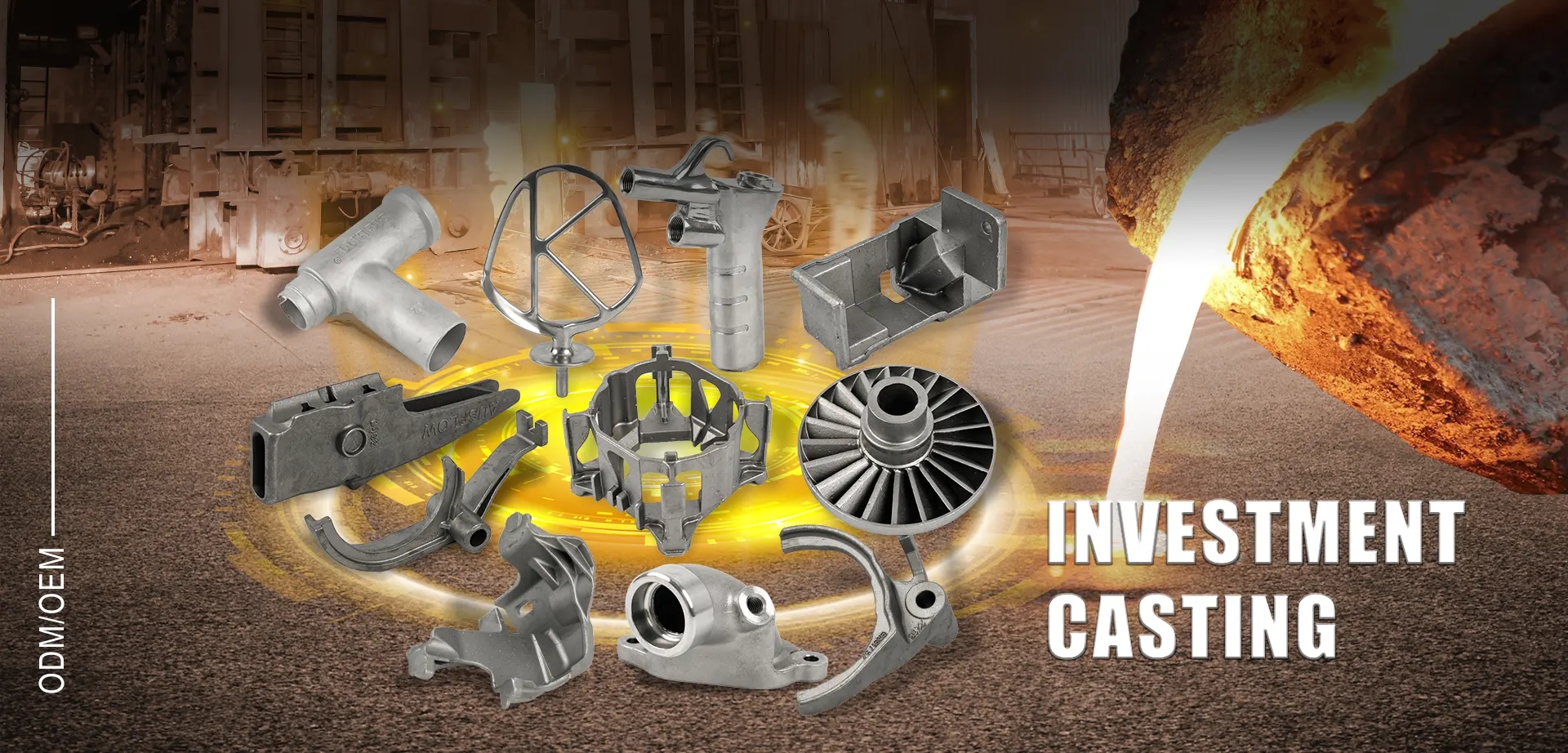
- English
- Español
- Português
- русский
- Français
- 日本語
- Deutsch
- tiếng Việt
- Italiano
- Nederlands
- ภาษาไทย
- Polski
- 한국어
- Svenska
- magyar
- Malay
- বাংলা ভাষার
- Dansk
- Suomi
- हिन्दी
- Pilipino
- Türkçe
- Gaeilge
- العربية
- Indonesia
- Norsk
- تمل
- český
- ελληνικά
- український
- Javanese
- فارسی
- தமிழ்
- తెలుగు
- नेपाली
- Burmese
- български
- ລາວ
- Latine
- Қазақша
- Euskal
- Azərbaycan
- Slovenský jazyk
- Македонски
- Lietuvos
- Eesti Keel
- Română
- Slovenski
- मराठी
- Srpski језик
When to Use Investment Casting In Automotive
2023-08-19
Investment casting is a versatile manufacturing process that can be used in various applications within the automotive industry. It offers several advantages that make it suitable for specific components and scenarios. Here are some situations where investment casting is commonly used in the automotive sector:
Complex Geometries and Intricate Shapes:
Investment casting is ideal for producing automotive components with complex shapes, fine details, and intricate features. Examples include turbine blades, intake manifolds, exhaust components, and brackets with intricate designs.
Weight Reduction:
In the automotive industry, reducing the weight of vehicles is a constant goal to improve fuel efficiency and performance. Investment casting can help achieve this goal by producing lightweight components while maintaining structural integrity. Aluminum and magnesium alloys are often used in investment casting for lightweight parts like transmission housings, engine brackets, and suspension components.
Heat Resistance and Durability:
Investment casting is well-suited for producing components that need to withstand high temperatures and mechanical stresses. Turbocharger components, exhaust manifolds, and engine components like valve housings benefit from the heat resistance and durability provided by investment casting of materials like stainless steel or nickel-based alloys.
Aesthetics and Surface Finish:
Investment casting can produce parts with high-quality surface finishes and fine details. This is advantageous for automotive components that are visible or require aesthetic appeal, such as decorative trim pieces, logos, and interior features.
Customization and Low Volume Production:
Investment casting allows for cost-effective production of low volumes of specialized components. This is useful for prototype development, custom parts, and limited production runs where the investment in traditional tooling might not be justified.
Reduced Machining and Assembly Steps:
Investment casting can create near-net-shape components, minimizing the need for extensive machining and assembly. This is particularly advantageous for automotive parts that have complex shapes and would otherwise require multiple machining operations.
Critical Engine Components:
Investment casting is commonly used for manufacturing engine components such as cylinder heads, valve guides, and connecting rods. These components require precision and durability, which investment casting can provide.
Safety Components:
Investment casting can be used to produce safety-critical parts like steering components, suspension components, and brake calipers. The process ensures accurate and consistent production of these critical parts.
Reduced Tooling Costs:
For certain automotive components, especially those with complex shapes, investment casting can offer lower tooling costs compared to other manufacturing methods like die casting or forging.
It's important to note that while investment casting offers many benefits, it might not be the optimal choice for all automotive components. Factors such as production volume, cost considerations, material properties, and part design will influence the decision to use investment casting or another manufacturing process.




